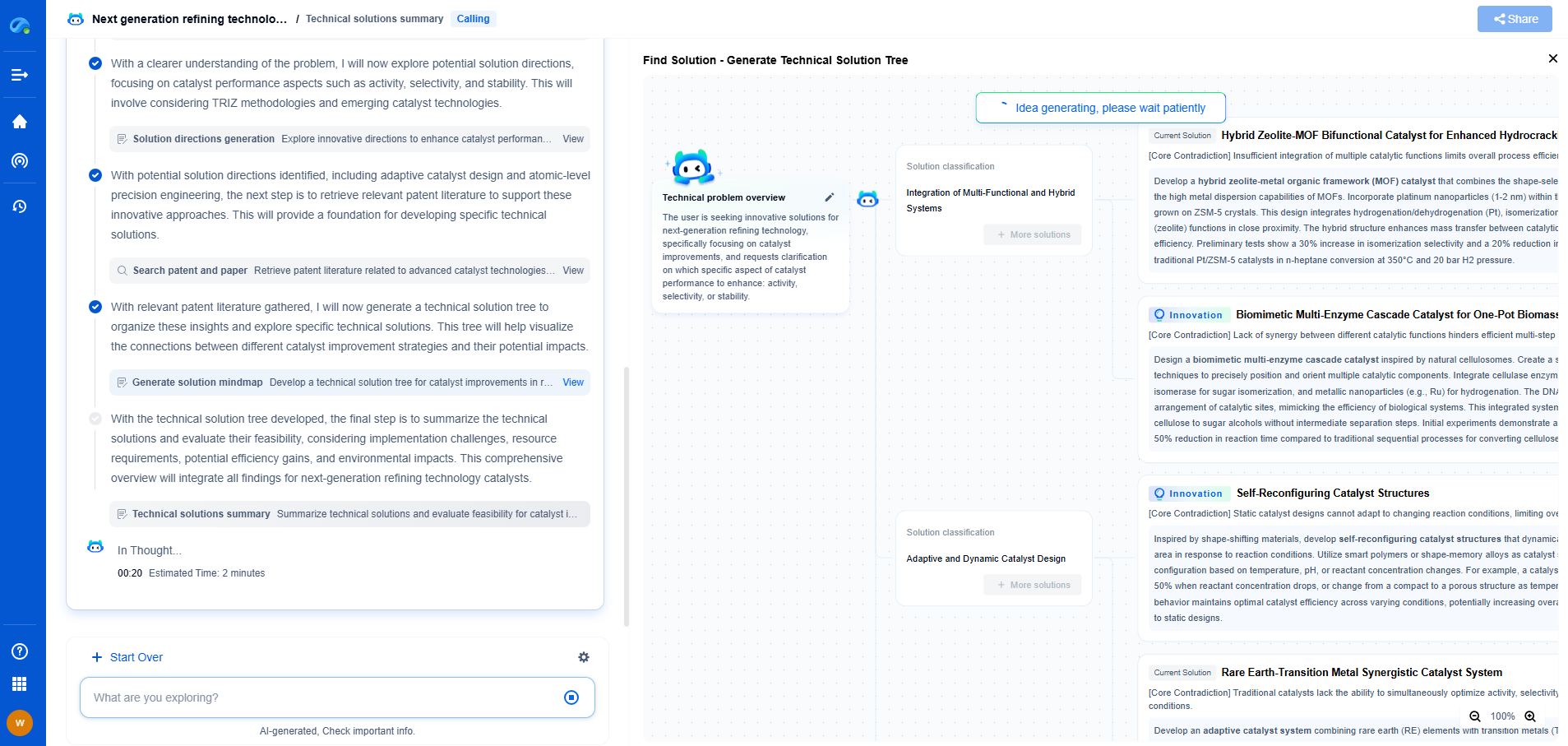QPSK vs QAM: Which Is Better for Wireless Transmission?
JUN 27, 2025 |
In the domain of wireless communication, modulation techniques play a pivotal role in determining the efficiency and reliability of data transmission. Two widely used modulation schemes are Quadrature Phase Shift Keying (QPSK) and Quadrature Amplitude Modulation (QAM). Each has its unique characteristics, advantages, and limitations. This article will delve into the intricacies of QPSK and QAM to determine which is better for wireless transmission.
Understanding QPSK
Quadrature Phase Shift Keying (QPSK) is a form of phase modulation where the carrier signal is modulated to represent data. QPSK uses four distinct phase states to encode two bits per symbol — effectively doubling the data rate compared to Binary Phase Shift Keying (BPSK). The phase states are typically separated by 90 degrees, allowing it to handle larger data rates efficiently.
Advantages of QPSK
1. **Spectral Efficiency**: QPSK is known for its spectral efficiency. By using four phase states, it efficiently utilizes bandwidth, making it suitable for scenarios where bandwidth is limited.
2. **Resilience to Noise**: QPSK provides good resilience to noise and interference, as the phase states are distinct, reducing the probability of error during transmission.
3. **Simplicity**: The implementation of QPSK is relatively straightforward, often leading to simpler receiver designs that are cost-effective.
Limitations of QPSK
Despite these advantages, QPSK has its limitations, especially in environments with very high data rates. Its spectral efficiency can be surpassed by other modulation techniques in scenarios where bandwidth is abundant.
Exploring QAM
Quadrature Amplitude Modulation (QAM) is a combination of amplitude and phase modulation. Unlike QPSK, QAM uses both amplitude and phase variations to represent data, allowing it to transmit multiple bits per symbol. Different forms of QAM, such as 16-QAM, 64-QAM, and 256-QAM, indicate the number of bits encoded per symbol.
Advantages of QAM
1. **Higher Data Rates**: QAM can achieve significantly higher data rates compared to QPSK. By encoding more bits per symbol, QAM efficiently utilizes available bandwidth for high-speed data transmission.
2. **Flexibility**: QAM's ability to adjust both amplitude and phase provides flexibility in adapting to varying channel conditions, optimizing performance in diverse environments.
3. **Bandwidth Utilization**: In scenarios with ample bandwidth, QAM's higher data rate capabilities make it an attractive choice for delivering high-resolution content and supporting demanding applications.
Limitations of QAM
However, the complexity of QAM comes with challenges. As the modulation order increases, such as moving from 16-QAM to 64-QAM, the system becomes more sensitive to noise and distortion. This necessitates higher signal-to-noise ratios (SNR) for reliable transmission, which may not always be feasible in wireless environments.
QPSK vs QAM: Which Is Better?
The decision between QPSK and QAM depends primarily on the specific requirements and constraints of the wireless transmission environment.
1. **Bandwidth Constraints**: If bandwidth is limited and resilience to noise is crucial, QPSK may be the preferred choice due to its spectral efficiency and robustness.
2. **High-Data Rate Requirements**: In scenarios where high data rates are essential, and bandwidth is not a constraint, QAM offers superior performance, delivering more bits per symbol.
3. **Environmental Factors**: Factors such as signal-to-noise ratio and channel conditions will also influence the decision. In environments with high SNR, higher-order QAM can be beneficial, whereas, in noisier conditions, QPSK may be more reliable.
Conclusion
Neither QPSK nor QAM is universally better; each has its strengths and weaknesses. The choice between them should be guided by the specific needs of the application, operational environment, and available resources. By understanding the distinct characteristics of QPSK and QAM, practitioners can make informed decisions to optimize wireless transmission systems for their particular use cases.
Unlock Next-Gen Innovation in Communication Technology with Patsnap Eureka
The field of communication technology is evolving at breakneck speed—from 5G and satellite systems to next-gen wireless protocols and quantum communications. Staying ahead demands more than just information—it requires strategic insights, real-time patent intelligence, and a deep understanding of technological trajectories.
Patsnap Eureka, our intelligent AI assistant built for R&D professionals in high-tech sectors, empowers you with real-time expert-level analysis, technology roadmap exploration, and strategic mapping of core patents—all within a seamless, user-friendly interface. Whether you're optimizing signal processing designs, navigating 3GPP standards, or exploring IP strategies for IoT and 6G networks, Eureka helps you move faster, think deeper, and innovate smarter.
Try Patsnap Eureka today—and see how it can transform the way you work across the entire communication technology innovation lifecycle.
- R&D
- Intellectual Property
- Life Sciences
- Materials
- Tech Scout
- Unparalleled Data Quality
- Higher Quality Content
- 60% Fewer Hallucinations
Browse by: Latest US Patents, China's latest patents, Technical Efficacy Thesaurus, Application Domain, Technology Topic, Popular Technical Reports.
© 2025 PatSnap. All rights reserved.Legal|Privacy policy|Modern Slavery Act Transparency Statement|Sitemap|About US| Contact US: help@patsnap.com

